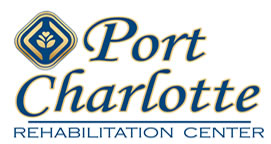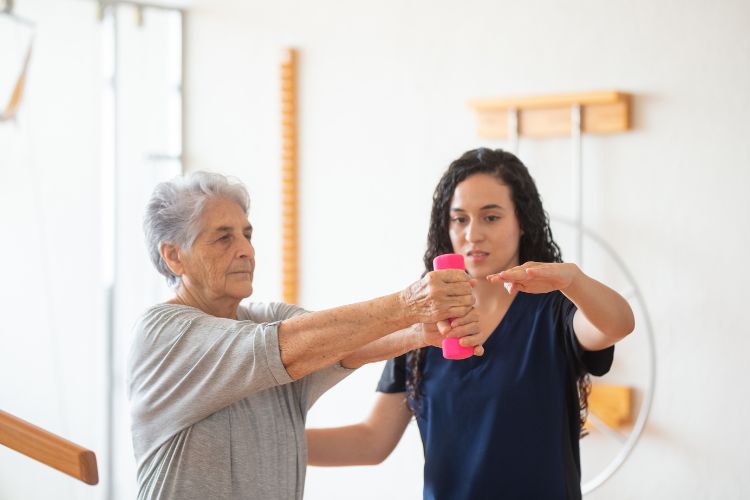Estrella Brignoni loves life, and it shows in her painting. But she had to put her canvas and brushes aside to care for a spouse. After several years of full-time caretaking, he passed away.
It was almost too tough for her to get back to routine without her recently departed spouse. In fact, they were both hospitalized at the same time – she with a lumbar fracture, and he with failing health.
After his death, she was admitted to a skilled rehab center and she physically struggled to get back to any meaningful activity. Her therapists made a point to uncover her history and bring out factors that would entice her back into participation.
“We are the only profession with explicitly focused training on participation in everyday life,” says Debbie Grenon, certified occupational therapist assistant (COTA) for Port Charlotte Rehabilitation Center.
Grenon is part of 140,000 occupational therapists and assistants that bring their profession to the forefront during Occupational Therapy (OT) Month in April and help debunk the many misconceptions about OT.
According to the American Occupational Therapy Association, “We are the only profession that helps people across the lifespan to do the things they want and need to do through the therapeutic use of daily activities (occupations). Occupational therapy practitioners enable people of all ages to live life to its fullest by helping them promote health, and prevent—or live better with—injury, illness, or disability.”
Occupational therapy practitioners have a holistic perspective, in which the focus is on adapting the environment and/or task to fit the person and the person is an integral part of the therapy team. It is an evidence-based practice deeply rooted in science.
“It’s not just giving out adaptive equipment to improve ease of an activity. Occupational therapy at its best, engages a patient to their passions,” says Kimmer O’Neill, MOT and director of rehab for Port Charlotte Rehab Center.
Case in point: Estrella Brignoni. As you enter her therapy session, you can hear her favorite song supplied by the therapy department. Her therapist also provides an easel and Brignoni’s daughter, Jeanette Brignoni, supplies the paint, canvas and brushes. “The hills are alive with the sound of music,” sings Estrella and she’s fully engaged in her activity.
Because there are many other therapeutic goals, Grenon brings in challenges. She has Brignoni intermittently stand while painting, and intermittently use right and left hand during the session. It’s a session geared to improve endurance with standing, strength of both arms while painting, and weight shifting to improve balance. Her arthritic hand’s range of motion got a good work-out by handling and moving the small brushes.
If Brignoni had more severe loss of hand and finger range of motion, she would get an evaluation by the team’s hand specialist. Sheila Flaherty, OTR/L, certified hand therapist (CHT), is the “go-to” person for hands. According to the Hand Therapy Certification Commission, Flaherty is one of only 5,900 hand specialists in the world and one of the few practicing specialists in Charlotte County.
According to the American Society of Hand Therapists (ASHT), 85 percent of hand therapists are occupational therapists. “Hand Therapists provide the highest standard of care. A qualified hand therapist evaluates and treats any problem related to the upper extremities. The hand therapist effectively provides postoperative rehabilitation, non-operative or conservative intervention; preventive care and industrial ergonomic consultation,” says ASHT.org.
An occupational therapist and/or a hand specialist may work on adapting tools, such as paint brushes, to drive the return of strength and sensation. Making tools larger or padding a handle for easier hold, securing a cuff to the hand or grip tape so that it sticks to the hand for a more secure grasp, are just a few ways the OT can help a patient.
But Brignoni didn’t need the extra-hand help. Turns out she got the kind of assist that spurs the heart into an activity that the body and soul enjoy.
“Our rewards come from our patient’s joy,” says Jeff Cleveland, President of Clear Choice Health Care in Melbourne FL.
For more occupational therapy information, call Port Charlotte Rehabilitation Center at 941-235-8011. They are located at 25325 Rampart Boulevard, Port Charlotte, Florida.







